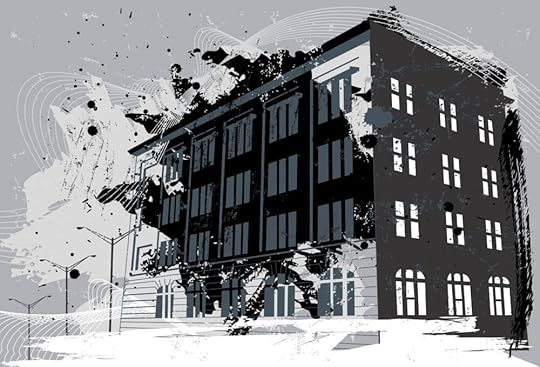Gea Elika's Blog, page 96
January 2, 2019
5 Ways to Avoid Debt When Shopping for Your First Home

If you’re a first-time home buyer, chances are
you’re trying to navigate the current real estate market as best as you can
while attempting to save as much money in the process. From exploring different
mortgage options to budgeting for closing costs, here are five ways you can
avoid debt when shopping for your first home.
1. Save for a down payment
One of the biggest ways you can avoid debt as a first-time home buyer is to make sure you can cover a down payment of at least 20% of the home’s price. For example, if you’re looking to buy a $400,000 home, a reasonable down payment would be $80,000. Use a down payment calculator to help you figure out how much you’ll need to hit your down payment goal.
If you don’t think you can reasonably save
enough for a down payment before buying a house, there are a variety of low down payment programs that
offer assistance and competitive mortgage rates for first-time home buyers. Ask
a mortgage lender about your options and look for specific programs in your
state. You could qualify for a Department of Veterans Affairs loan (requires no
down payment) or a Federal Housing Administration loan (requires a minimum down
payment of 3.5%). Note: putting down less than 20% on a house may mean higher
monthly mortgage payments.
Start saving up for a down payment by
creating a monthly budget, setting aside work bonuses, opening up a savings account,
or doing freelance work for extra cash.
2. Explore your mortgage options
A 30-year mortgage is often preferred among
first-time home buyers because of the lower monthly mortgage payments. Lower
payments can help you put more cash toward savings and help you qualify for a
higher loan amount when you purchase a home. However, 30-year mortgages
typically come with a higher interest rate, meaning you’ll have to pay more
money over time. If you can afford larger monthly payments and want a lower
interest rate, opt for a 15-year mortgage. Though you’ll be making larger
payments month over month, you’ll get to build equity faster and be debt-free
after 15 years.
3. Make sure you have a high credit score
Mortgage lenders will look at your credit
score to assess your creditworthiness and decide whether or not to approve a
loan and at what interest rate. To get the lowest rate on a mortgage, you
should have a credit score of 750 or higher. If
you have a lower credit score, you may still be able to get a mortgage by
shopping around and having enough money saved up for a 20% down payment. If you
want to check your credit score, you can request a free credit report once a
year from Equifax, Experian, or TransUnion.
4. Stick to your budget
When shopping for your first home, create a
budget and look at properties that cost less than the amount you were approved
for. If you’re looking to buy in a competitive real estate market, you’ll
probably be bidding on houses that get multiple offers. Though it’s tempting to
make a high-priced offer to beat out competitors, you shouldn’t let your
emotions take over. Consider shopping below your pre-approval amount to
generate some wiggle room for bidding.
5. Budget for closing costs
Most first-time home buyers underestimate the
cost of homeownership and don’t have enough saved up for closing costs. In New
York, closing costs generally run between 2%–5%
of the purchase for buyers. To save money on various closing expenses, like
homeowners insurance, home inspections, a home warranty, or a title search,
shop around and compare prices.
In addition to these expenses, you’ll also
want to budget for any repairs you may have to make after closing. If a home
inspection reveals that the HVAC isn’t blowing air properly or a major
appliance is broken, your home warranty can save you a ton of
money on repairs or replacements. If you don’t have a warranty, you’ll have to
pay out-of-pocket for any necessary repairs or replacements, so make sure you
have extra cash on hand for these situations.
The post 5 Ways to Avoid Debt When Shopping for Your First Home appeared first on ELIKA Real Estate.
December 29, 2018
Why Buying in Winter Can Pay Off

With temperatures dropping low it must look like a fool’s errand
to go shopping for a home now. The winter season is typically the time when the
market (and weather) cools down as buyer and seller take a break for the holidays.
Considering the insane snowstorm that NYC saw last year it would seem crazy to
try moving house now. Winter is a time when fewer homes are sold and when fewer
people want to move. But as you’ll see, that’s precisely why now is the time to
buy a home in winter.
1. There will be fewer people moving
Think about it. These cold months mean fewer sellers that
want to meet but also less competition from other buyers. On average, May,
June, July, and August make up 40% of housing sales. By contrast, January and
February make up less than 6%. With the current buyer’s market in NYC that puts
even more power in your hands as you’ll have less competition to deal with. True,
you may find your dream home when summer inventory opens up. But your chance of
actually buying a home is better in winter when there are fewer buyers and, in
particular, less all-cash buyers.
2. Sellers who list in winter are motivated to sell
If a seller is listing their home in the depts of winter, then that means they seriously want to sell. This can give you a big upper-hand in negotiations. When looking through listings, look for properties that have been on the market for several months. The longer it’s been on the market, the more leverage you have when it comes to negotiations. Chances are, you can land a great apartment for a fraction of the price you would have paid six months earlier. Just keep in mind that this doesn’t mean you should severely lowball your offer. Talk with your buyer’s agent and you can find what the right offering price should be.
3. Winter gives you the chance to test out the property
No season puts more pressure on a home than winter. This is
the time when pipes freeze, when windows show how truly wind resistant they
are, and how good the insulation really is. Inspecting a home in winter allows
you to see a property at its most extreme. Sellers will often do what they can
to dress up defects in other seasons but there’s little they can do to disguise
problems in winter.
4. Hiring movers is usually easier
No doubt, moving furniture in the dead of winter is
something no one wants. However, money can speak a lot of languages. Far fewer
people move to a new house in the winter which means much less work for moving
companies. So long as you are flexible and allow them several days to get the
job done, you could get a much better price then you would have in the spring
or summer.
5. You will (probably) receive financing much sooner
As with every other industry, mortgage brokers will have much less to do in the winter months. With fewer people applying for loans at this time there will be a far shorter waiting time to get your mortgage application processed. This makes the time to closing day much shorter so you’ll be in your new home in no time.
The post Why Buying in Winter Can Pay Off appeared first on ELIKA Real Estate.
December 28, 2018
How Many Mortgage Loan Types are There?

Whether you’re looking to buy a new home or remodel an existing one, chances are you’ll need a loan. In earlier times home buyers had only three mortgage loan types to choose from. The fixed-rate conventional mortgage, an FHA loan or a VA loan. Nowadays there’s far more to choose from and if you don’t understand the subtle differences between them it can be hard knowing which one to pick. Fact is, there is no one size fits all loan types. Your financial situation and home-ownership needs will help point you in the right direction. To make things easier, here are the most common loan types and what they cover.
Fixed vs. Adjustable Rate
When deciding on a loan one of the first choices you’ll have
to make is whether you want a fixed-rate or
adjustable-rate mortgage loan. Every loan fits into one of these two
categories, or sometimes a “hybrid” combination of the two. These are the main
differences between them and as you’ll see both choices have pros and cons that
have to be weighed carefully.
Fixed Rate
– The interest rate is set for the entire duration of the repayment term.
Month after month, year after year, your monthly payment will stay the same.
However, for this stability, you will pay a higher interest rate than the
initial ARM rate. Adjustable
Rate – An adjustable rate mortgage loan (ARM) has an interest rate which
will change over time. In most cases, the change will come once every year
after an initial period of remaining fixed. For example, the 5/1 ARM loan
starts with a fixed rate of interest for the first five years. After that, it
will adjust each year. The main benefit of an ARM loan is that the initial rate
and monthly payments are lower than a fixed rate loan. But it comes with the
uncertainty of changing rates in the future.
Government Issued vs. Conventional Loans
So, once you know whether you want a fixed or adjustable
rate loan, next you’ll want to consider whether you want a government-backed
loan or a conventional one.
Conventional
Loans – These are loans from mortgage lending institutions that are not
backed by an agency of the government. This sets it apart from FHA and VA loansFHA Loans
– This is the most common loan choice for first-time buyers but it’s
available to all other buyers as well. The Federal Housing Commission (FHA) is
an offshoot of the Department of Housing and Urban Development (HUD), a part of
the federal government. Through this, the government insures the lender against
any losses that may result from a default. What’s great about this loan is that
your down payment can be as low as 3.5% of the purchase price. The downside is
that you’ll have to take out mortgage insurance which will increase the size of
your monthly payments.VA Loans
– Military veterans and their families may qualify for this program through
the U.S. Department of Veteran Affairs. As with the FHA loan, the government
will reimburse the lender for any damages resulting from a default. The
difference with the FHA is that the down payment is 0%. That’s right, the
borrower receives 100% financing.
Secured vs. Unsecured Loans
Another distinction between
loans is that they can be secured or unsecured.
Secured
Loans – Most loans are of this type and designate a loan that is covered by
collateral such as your house or car. In the event of a default, your property
will be transferred to the lender. How much you qualify for and the interest
rate will be determined by the value of the property but also your credit
history.Unsecured
Loans – As the name suggested, an unsecured loan is not backed by any
collateral. Instead, the interest rate and loan amount are determined by your
credit history and loan amount. For those with a good income, superb credit
history, and solid paycheck plan, this can be a good option.
Jumbo vs. Conforming Loans
How much you wish to borrow puts
your loan in one of two categories.
Conforming
Loans – To meet the criteria for a conforming loan it must meet the
underwriting guidelines of Fannie Mae or Freddy Mac. These are two
government-controlled corporations that buy and sell mortgage-backed securities
(MBS). The main guideline is the maximum loan amount. Jumbo
Loans – Any loan that doesn’t meet the guidelines of Fanny Mae or Freddy
Mac is a non-conforming or jumbo loan.
Because of its size it presents a much bigger risk for a lender. Usually, to
secure one you’ll need excellent credit and have to make a large down payment.
Open-ended vs. Close-ended Loans
Depending on whether you’re borrowing to finance a home
purchase or a renovation, one final distinction remains between loans.
Open-ended
Loans – This is a loan with a fixed-limit line of credit that you can
borrow from again and again. A credit card is one example of an open-ended
loan. Another example is a home equity line of credit (HELOC). Based on a
percentage of your homes appraised value, the lender approves you a certain set
amount. This allows you to easily borrow and pay back over time. Homeowners
going through a renovation project find this very useful.Close-ended
Loans – Mortgages, car loans and student loans all fall into this category.
You are approved for a set amount and can now borrow from again. If you need
more credit, then you will need to take out a new loan.
The post How Many Mortgage Loan Types are There? appeared first on ELIKA Real Estate.
How Many Loan Types are There?

Whether you’re looking to buy a new home or remodel an existing one, chances are you’ll need a loan. In earlier times home buyers had only three mortgage loan types to choose from. The fixed-rate conventional mortgage, an FHA loan or a VA loan. Nowadays there’s far more to choose from and if you don’t understand the subtle differences between them it can be hard knowing which one to pick. Fact is, there is no one size fits all loan types. Your financial situation and home-ownership needs will help point you in the right direction. To make things easier, here are the most common loan types and what they cover.
Fixed vs. Adjustable Rate
When deciding on a loan one of the first choices you’ll have
to make is whether you want a fixed-rate or
adjustable-rate mortgage loan. Every loan fits into one of these two
categories, or sometimes a “hybrid” combination of the two. These are the main
differences between them and as you’ll see both choices have pros and cons that
have to be weighed carefully.
Fixed Rate
– The interest rate is set for the entire duration of the repayment term.
Month after month, year after year, your monthly payment will stay the same.
However, for this stability, you will pay a higher interest rate than the
initial ARM rate. Adjustable
Rate – An adjustable rate mortgage loan (ARM) has an interest rate which
will change over time. In most cases, the change will come once every year
after an initial period of remaining fixed. For example, the 5/1 ARM loan
starts with a fixed rate of interest for the first five years. After that, it
will adjust each year. The main benefit of an ARM loan is that the initial rate
and monthly payments are lower than a fixed rate loan. But it comes with the
uncertainty of changing rates in the future.
Government Issued vs. Conventional Loans
So, once you know whether you want a fixed or adjustable
rate loan, next you’ll want to consider whether you want a government-backed
loan or a conventional one.
Conventional
Loans – These are loans from mortgage lending institutions that are not
backed by an agency of the government. This sets it apart from FHA and VA loansFHA Loans
– This is the most common loan choice for first-time buyers but it’s
available to all other buyers as well. The Federal Housing Commission (FHA) is
an offshoot of the Department of Housing and Urban Development (HUD), a part of
the federal government. Through this, the government insures the lender against
any losses that may result from a default. What’s great about this loan is that
your down payment can be as low as 3.5% of the purchase price. The downside is
that you’ll have to take out mortgage insurance which will increase the size of
your monthly payments.VA Loans
– Military veterans and their families may qualify for this program through
the U.S. Department of Veteran Affairs. As with the FHA loan, the government
will reimburse the lender for any damages resulting from a default. The
difference with the FHA is that the down payment is 0%. That’s right, the
borrower receives 100% financing.
Secured vs. Unsecured Loans
Another distinction between
loans is that they can be secured or unsecured.
Secured
Loans – Most loans are of this type and designate a loan that is covered by
collateral such as your house or car. In the event of a default, your property
will be transferred to the lender. How much you qualify for and the interest
rate will be determined by the value of the property but also your credit
history.Unsecured
Loans – As the name suggested, an unsecured loan is not backed by any
collateral. Instead, the interest rate and loan amount are determined by your
credit history and loan amount. For those with a good income, superb credit
history, and solid paycheck plan, this can be a good option.
Jumbo vs. Conforming Loans
How much you wish to borrow puts
your loan in one of two categories.
Conforming
Loans – To meet the criteria for a conforming loan it must meet the
underwriting guidelines of Fannie Mae or Freddy Mac. These are two
government-controlled corporations that buy and sell mortgage-backed securities
(MBS). The main guideline is the maximum loan amount. Jumbo
Loans – Any loan that doesn’t meet the guidelines of Fanny Mae or Freddy
Mac is a non-conforming or jumbo loan.
Because of its size it presents a much bigger risk for a lender. Usually, to
secure one you’ll need excellent credit and have to make a large down payment.
Open-ended vs. Close-ended Loans
Depending on whether you’re borrowing to finance a home
purchase or a renovation, one final distinction remains between loans.
Open-ended
Loans – This is a loan with a fixed-limit line of credit that you can
borrow from again and again. A credit card is one example of an open-ended
loan. Another example is a home equity line of credit (HELOC). Based on a
percentage of your homes appraised value, the lender approves you a certain set
amount. This allows you to easily borrow and pay back over time. Homeowners
going through a renovation project find this very useful.Close-ended
Loans – Mortgages, car loans and student loans all fall into this category.
You are approved for a set amount and can now borrow from again. If you need
more credit, then you will need to take out a new loan.
The post How Many Loan Types are There? appeared first on ELIKA Real Estate.
How to Protect Your Investment from Natural Disasters

It is readily apparent that natural
disasters are striking with greater frequency and these events can leave
devastating consequences in their wake. There are steps homeowners can take to protect
themselves and you may collect insurance
payments under certain circumstances.
However, while most of the news
coverage focuses on the human toll, which is understandable, we would like to
turn our attention to what investors can do in the event a natural disaster
affects one of your investment properties.
Understand your coverage
Renters’ insurance typically covers
your tenants lost, stolen, or damaged personal goods. This does not cover
losses incurred to your property, such as any physical damage done to the
apartment.
A landlord’s policy is more
extensive than a renter’s or a typical homeowner’s policy. But, you need to
check the policy and understand what it covers, and, perhaps more importantly,
what is your responsibility. You should know your deductible and what events trigger
a claim. For instance, most policies do not cover flood damage. It is
particularly important to know if your policy covers lost rental income due to
inhabitability and potential injury.
If you do not understand anything,
you should ask your insurance agent prior to disaster striking.
Keep orderly records
You
should have your property and insurance records in a safe place. Then, once
disaster hits, make sure your estimates and receipts are in order to keep track
of the required costs to fix your property.
This
takes on an added level of complexity for real estate investors, who may have
multiple properties.
Tenants
Many
leases include a clause allowing landlords to exit the agreement should
disaster hit, providing it is not a rent-stabilized building. Assuming tenants can safely habitat the
unit, a typical tenant’s clause is one that allows him or her to break the
lease if the problem is not fixed within 30 days.
You may also find you can continue
to charge rent. However, you should prepare for a backlash. Aside from the bad
publicity, under New York State’s Warranty of
Habitability, owners generally have to provide a property where the
tenant has a living condition and does not present a danger to their life,
health, and safety (this warranty does not extend to a tenant that caused the
damage).
Have a reliable contractor
As
a property owner, hopefully, you have established strong connections with
general contractors and repair personnel such as electricians and plumbers.
Remember, a lot of people are likely trying to reach them in the aftermath of a
disaster. As a property owner, one way to catapult to the top of the list is to
do a lot of business and refer others to him or her.
Co-ops and condos
Investors
tend to shy away from buying co-op units since there are usually rules designed
to limit a shareholder’s ability to sublet.
Therefore,
New York City investors typically turn to condos due to the less restrictive
rules the board imposes. The building’s policy is likely to cover external
damage, such as to the roof, façade, and landscaping. While this means you do
not have to concern yourself with these aspects, you still need a policy to
cover damage to the unit, though.
The post How to Protect Your Investment from Natural Disasters appeared first on ELIKA Real Estate.
December 27, 2018
A Simple Guide to Improving Your Relationship with Your Landlord

It’s almost par of the course to have a few spats with your landlord in NYC. The issues can range from the major to the minor and if left unresolved the relationship can become irreparably damaged. The importance of a good relationship with your landlord should not be understated. Some bad blood between you and your landlord puts not just your security deposit at risk but also your reference letter for your next apartment. Respect is a two-way street. If you want a good business relationship with your landlord, you’re going to have to make some effort.
1. Pay the rent on time
Best to start with the most obvious one. Chances are your landlord has to make monthly mortgage payments on the property. If they can’t pay in time, they’ll be charged interest which is why making your payments on time is so important. When you sign a lease, you are entering into a trusted agreement just like any contract. Imagine this in perspective, how would you feel if your employer paid your salary late every month. Develop trust with your landlord by ensuring you pay your rent as close as possible to the 1st of the month.
2. Keep good communication open
Over time issues will pop up that will need to be addressed. If you want your landlord to respect you then show them respect by communicating any concerns or requests to them in a polite and non-demanding way. When there’s a problem, don’t berate them aggressively as they may be genuinely unaware of the problem until you tell them. Your lease will clearly state what you are and aren’t responsible for. Having good communications with your landlord will allow you to iron out any problems that are of common interest to both of you.
3. Provide access to the apartment when necessary
When it comes to rent-stabilized apartments, landlords sometimes have a problem with this. Tenants have good reason to be worried about construction harassment. But if it’s got to be done it’s got to be done. If the adjoining apartment has a mold problem that can only be dealt with by accessing your apartment, then you should be there to open the door and let the work continue. Just make sure you have good communication with your landlord so you can schedule visits at appropriate times for everyone.
4. Be reasonable and don’t pick petty fights
The policies and rules of your rental will be clearly laid out in your lease. Have respect for these and if something isn’t covered in the lease then double-check it with your landlord first. It’s fine to make minor alterations such as painting the walls or setting up shelving units. Just check your policies first before starting any DIY projects. Most landlords are very reasonable about accommodating small changes. The worst that can happen is that you’ll be denied permission or be asked to return the apartment to its original condition upon moving out. It’s better not to pick petty fights over small things. Preserving the relationship with your landlord should be the first priority.
5. Keep the apartment in good condition
On moving in it’s a good idea to take photos and document the original state of the apartment. This will prevent any issues being raised if there’s a dispute later about whether something was there before or after you moved in. When it’s time to move out, patch up any holes left from nails or other small changes made over your time there. It’s also a good idea to do a walk-through of the apartment with your landlord before departure so you can be sure you’re both on the same page.
The post A Simple Guide to Improving Your Relationship with Your Landlord appeared first on ELIKA Real Estate.
December 26, 2018
Should You Buy a Home as-is?

While navigating the NYC home buying process there are
numerous expressions and nuances that you’ll encounter. One of these that
you’re sure to come across is the term “as-is.”
This wording in a listing description means the buyer must be willing to accept
the property in its current condition. In effect, this means that you’ll be
forgoing any opportunity to request repairs from the seller. Obviously, this
makes it look like a risky purchase. No one wants to pay top dollar for a
property only to find out later it has major problems that will require
expensive repairs. That said, purchasing a property as-is can also be a golden
opportunity for a bargain. To help you decide, here are some considerations you
need to make before buying an NYC property as-is.
What does “as-is” mean?
As stated, a property that’s being listed in “as-is”
condition means that what you see is what you get. The seller’s reasons for
this may be that they don’t have the funds to do repairs. Another reason is
that time could be a factor. They just want to get it off their hands as soon
as possible for whatever they can get. By New York State law, any issues with
the property that the owner is aware of must be fully
disclosed. However, they are not required to do an inspection that
might uncover other defects that they are not aware of. Sellers can also forgo
making any disclosure by instead paying a $500 fee on closing day, a decision
that many “as-is” sellers chose to go for.
All this is true when purchasing a resale. But if you’re
buying a new
development, you’ll have guarantees from the owner that it will be
free of defects for a certain period of time as per the offering plan. The same
applies when buying a co-op or condo. But if you’re buying a full building,
such as a townhouse, brownstone or single-family home then any defects will be
entirely your responsibility once the transaction is complete.
Common problems that you might encounter in an “as-is” home
include:
Structural problemsLeaking or faulty roofTermites or other pest infestationsNon-functioning systems such as HVAC, plumbing
or electricalMold or mildew problems
It should be clear by
now that purchasing a home as-is can be a serious risk. But if you take the
right precautions you can lessen that risk.
How can you protect yourself?
The best protection you can give yourself in purchasing an
as-is property is by insisting on a home
inspection contingency. If the seller refuses to allow this then
that is a good reason to suspect they know something is wrong. Getting an
inspection will allow you to see what they mean by “as-is.” It could turn out
that everything is in good shape and the seller just wants to forgo any long
drawn-out negotiations. They simply want you to see it for what it is and make
an offer based on that.
If problems are encountered, then so long as you have the
inspection contingency in place you will be able to exit the deal and get your
down payment back. Even if you’re willing to purchase a property that is in
need of repairs you may run into trouble if you require financing. Mortgage
lenders typically require hazard insurance to ensure against the collateral. If
there are major defects in the property such as roofing or electrical then the
insurance company may not approve the loan. Properties in need of extensive
repairs are usually only dealt with by all-cash buyers.
Provided that you are represented by a buyer’s agent, it’s still possible to renegotiate the contract if issues are found. For example, you, the buyer, have been allowed full due-diligence after the signing of the contract. The inspection later finds termite damage which the seller was not previously aware of. Now that they know this, they will be obliged to fully disclose it to any future buyer. In this scenario, it would make more sense to negotiate with you as you’ve already shown that you’re a serious buyer.
Final thoughts
Purchasing an as-is property presents risks but these can be
mitigated with the right precautions. The foremost one is to have an inspection
contingency clause included in the contract. Next will be having an experienced
real estate agent by your side who can advise and negotiate on your behalf.
Make sure you know what you’re getting and that you’re fully prepared to do
what repairs are needed once you become the owner.
The post Should You Buy a Home as-is? appeared first on ELIKA Real Estate.
December 24, 2018
Closing Costs: Condo versus Co-op

New York City has a plethora of co-ops
and condos. There are distinct differences
between the two. It is not discussed often, but with the different ownership
structures, there is a vast disparity between the closing costs for a co-op and
condo. Purchasers should prepare to pay a markedly higher amount for condos.
Condos most closely align with what one
thinks about home ownership. That is, owning real property. Co-ops are more
akin to owning shares in a corporation. We provide a breakdown in order for
buyers to better understand where the difference lies.
Mortgage recording tax
This is typically a condo buyers largest closing cost. The state and city both impose a charge on both new and refinanced mortgages, with the percentage increasing with the mortgage balance.
The tax rate ranges from 2.05% for
mortgage balances less than $500,000 and increases to 2.175% for loan amounts
greater than this amount. The tax rises to 2.8% for mortgages greater than
$500,000 on certain properties, but this does not apply to condos.
With the city’s $945,000 median condo
selling price ($1.6 million in Manhattan) based on the Real Estate Board on New
York’s (REBNY) third
quarter report, the recording tax comes out to quite a bit of money
due at closing. For instance, assuming the $945,000 price and a 20% down
payment, buyers owe more than $16,000.
Co-op buyers do not have to pay this tax
since they are not buying real property. Rather, you purchase shares in a
corporation and receive a proprietary lease that allows you to live in the
unit.
Title insurance
Lenders require condo buyers to buy title
insurance in order to provide protection against future claims that
arise from title disputes. The insurance company bases the premium amount as a
percentage of the purchase price.
Aside from lender’s title insurance, an
owner can also purchase title insurance. The former’s premium declines as the
mortgage balance decrease while the owner’s policy protects you for the full
purchase price or, if you choose, the property’s market value.
However, lenders
do not require co-ops owners to buy title insurance.
Real estate taxes
While only condo owners bear
responsibility for mortgage taxes and title insurance, both pay real estate
taxes. If you choose to pay the tax on your own, you do not have to set up an
escrow account. This means you have to budget accordingly. However, if you roll
it into your mortgage payment, the lender is going to require you to put a
certain amount aside at the time of your closing. This means you have to come
up with potentially several months’ worth of taxes.
A co-op’s taxes are based on the number
of shares you own. Hence, you pay this with your monthly maintenance fee.
Other items
It is a minor amount, but mortgage and
deed recording fees are generally lower for co-ops. Co-op buyers are likely to
save a couple of hundred dollars, but you are likely to spend any savings you
realize on higher board fees.
The post Closing Costs: Condo versus Co-op appeared first on ELIKA Real Estate.
December 21, 2018
Top 5 Questions to Ask When Interviewing an Architect

In your search for
an architect to remodel your home, you need to be sure you’ve got
the right person for the job. This person will be responsible for designing
your remodel plan and coordinating the team that will make your dreams a
reality. But if this is your first time working with an architect it might be
hard knowing what questions to ask. Start by doing some research and finding some
architects you think are right for the job. Then set up an interview. Have your
questions ready beforehand and these are the top ones you should be asking.
1. Why do you want to work on this project?
Every architect has their own design preferences and style.
You’ll want one that closely matches your vision and if they’re in an interview
then obviously you like their style. But their heart has to be in it as well.
Just because they’ve accepted the invitation for an interview doesn’t mean they
want the job. Hopefully, they do but if they don’t share the same passion as
you for the project then they might not be the right choice.
2. How much of a time commitment will you need from me?
Beyond the obvious question of how long they think the
project will take, you’ll want to know how much time they’ll need from you.
Working with an architect isn’t as simple as sitting through a few meetings to
draw up the blueprints. They’ll need time from you now and then to work through
problems, concerns or new ideas. Everything works much better and faster when
the client is as dedicated to the project as the architect is. Make it clear
how you will communicate – in person or on the phone – and how often. Sometimes
it may not be possible to meet during business hours. If so then you’ll need to
make sure both of you can meet on the weekends, early mornings or late
evenings.
3. How can I be helpful through the process?
Just as every architect has their own design style, each one
also has their own working style. If you’re not sure how involved you should be,
then simply ask! Most architects love a client that gets involved in a project.
But if you get too much in the way it will hamper the project. Make sure you
understand the organizational process so then you know how you can be the most
helpful. Timelines will need to be established and documents drafted and sent
for review if the project is to move forward. Having this kind of conversation
early on sets the scene for the project and allows the architect to plan the
road ahead.
4. What are the biggest issues and considerations in the project?
On explaining your vision for the project the architect’s
brain will already be anticipating the biggest challenges. In your dreaming and
planning for the project, you may have overlooked certain things like building
regulations and design challenges that the architect is already foreseeing. On
hearing their answer, ask if they’ve encountered similar problems before and
how they were handled. This will also tell you about the experience level of
the architect and how good they are at problem-solving.
5. Can you tell me about the team you will have on the project?
Architecture firms work as a team and you’ll want to know who’s on that team. Ask for introductions and get to know them as well. Knowing who you’ll be working within the coming months and how often will be vitally important. There might be a project manager you get on great with but a designer that you feel is underqualified or you don’t gel with. Ask about which people you’ll be spending the most time with. If you’ll be spending a lot of time with that designer you don’t gel with then this is a recipe for disaster.
The post Top 5 Questions to Ask When Interviewing an Architect appeared first on ELIKA Real Estate.
December 18, 2018
5 Signs a Home Seller may be Hiding Something

Home hunting can be an exciting time, but you need to keep your wits about you through it all. While going through an open house or private showing you’ll be guided by the listing agent who represents the seller. If they feel that the property might be a hard sell, they will sometimes use a few staging tricks to cover up any defects. It’s up to you and your agent to stay aware. Try to look beyond what they want you to see and spot what they’re trying to hide. Here are some signs to watch out for that suggest the sellers are trying to hide something.
1. There is mood music playing
When entering a staged home, you’ll usually see a lifestyle depicted. For instance, a dining room set up like a fancy bistro with the rhythms of Salsa music playing in the background. The scene can feel very seductive which is exactly the point. But stop tapping your feet for a moment and have the listing agent turn the music off. Music is often used to mask traffic noise. Granted, this is New York and depending on your location it will be hard to entirely escape the noise of the outside streets. But if it’s above your tolerance level then you could be in for some tough nights trying to sleep.
2. No sofa, but a love seat
Another home staging technique is to make a smaller room look bigger. The easiest way to do this is to replace a 3-person couch with a two-person love seat. The difference might not seem like much, but you’ll definitely notice it when you try to move a larger couch inside. You can anticipate problems like this by asking for room measurements or bringing your own tape measure at the next showing. There’s nothing wrong with a seller using this trick but you need to be aware of it if you’re not to be misled.
3. Every light is on in the afternoon
How natural light filters through a home depends on a number of things such as the time of year, the time of day and how the property is positioned. You probably don’t have all your lights on in the afternoon. If you attend an afternoon viewing and all the lights are on that should make you suspicious. All this artificial light could be used to mask the fact that the property doesn’t get much natural light. Have the agent turn off all the lights in a room to get a better sense of how the natural light filters through it.
4. Heavy use of air fresheners or diffusers
An open house that makes excessive use of air fresheners should be a red light. They may be trying to mask an odor and are hoping you don’t notice. Bad smells could be caused by cigarette smoke, pets or a nearby industrial factory. The first two can be eliminated overtime with some professional help but the third will be impossible to deal with. Try to figure out what they could be trying to cover up before you make an offer.
5. The smell or sight of fresh paint
It’s very common for sellers to touch up a place with fresh paint before listing it. There’s nothing wrong with that but be aware that theymay be trying to cover up mildew or water damage. If you notice patches offresh paint on the walls or ceiling that’s a definite red light that they’re trying to hide something. Check the ceiling corners and anywhere with pipes or faucets for black or gray spots that indicate water damage.
The post 5 Signs a Home Seller may be Hiding Something appeared first on ELIKA Real Estate.



